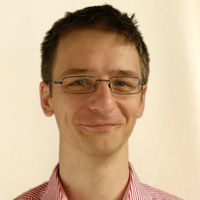Neef Group
Bernstein-Group
The Bernstein-Group at the InnerEarLab works on the interface of experimental biophysics/neuroscience and computation neuroscience. It emerged out of a fruitful collaboration of many years between the InnerEarLab and the group of Theoretical Neurophysics at the Max-Planck-Institute of Dynamics and Self-Organization. The focus lies on establishing quantitative models of signal transduction and sound encoding at the inner ear ribbon synapse. Some peculiar aspects of this system make it very interesting for both, synaptic physiology and computational neuroscience: For one, the molecular machinery of Ca2+-secrecion coupling is different from central synapses as key molecular players like complexin and, synaptotagmin are missing from the hair cell; consequently "standard" synaptic models might fail to adequately describe the hair cell synapse. Furthermore, each of the dozen or so presynaptic sites within a hair cell represent the sole input to exactly one auditory nerve cell and each of those nerve cells seems to encode different aspects of the incoming sound. On the biophysical side, the Bernstein-group deals with the advancement of methods and experimental paradigms to measure fundamental parameters of the presynaptic signaling cascade (Neef et al., 2007 a,b). On the side of computational neuroscience we establish biophysically motivated models of signal transduction, comprising the hair cell presynapse, aspects of postsynaptic action potential generation down to synaptic transmission at the next stage, in the cochlear nucleus (Strenzke et al., 2009; Buran et al., 2010). Modeling allows us to link the results of ultrastructural experiments, in vitro and in vivo synaptic physiology. Those models not only guide the experimental design of in-vivo experiments of the "Auditory Systems Physiology" group, but they are the stepping stones to the answer of the question that is our central interest: "Which aspects of the biophysical signaling cascade ultimately shape sound encoding?"
Andreas Neef is now working at the Campus Institute for Dynamics of Biological Networks.

 https://orcid.org/0000-0003-4445-7478
https://orcid.org/0000-0003-4445-7478